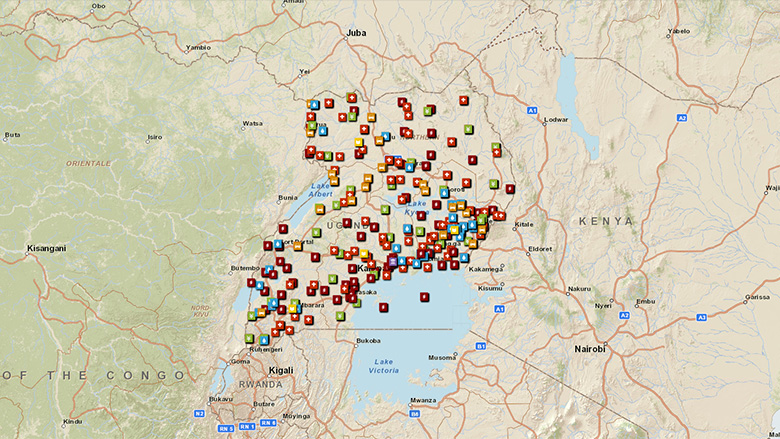Challenge
A conflict that began with the 1986 election of Yoweri Museveni to the Presidency of Uganda has spread across the great lakes region of Africa and spurred the development of the LRA and ADF. Underlying the insecurity in Uganda’s northern regions is a literacy rate of 64% and a poverty rate of 46.2%, nearly twice the national average as of 2008. The national decline in poverty has neglected these northern regions, where abductions, violence, and internal displacement continue to plague communities. Female reporters (ex-combatants and their dependents who have renounced rebellion and registered with the government) were among the most isolated, unhappy, and politically marginalized group of ex-combatants. The Amnesty Act of 2000 provided amnesty to all individuals willing to abandon rebellion and peacefully rejoin society without fear of retribution, as well as created the Amnesty Commission to monitor and coordinate demobilization, reintegration, and resettlement of reporters (persons receiving Amnesty – ex-combatants and collaborators). Nevertheless, proactive action was still needed to help demobilize and reintegrate remaining rebels.
Solution
The Uganda Demobilization and Reintegration Program helped implement the agreed demobilization and repatriation of LRA and ADF rebels, while assisting the social and economic reintegration of former rebels and collaborators. A total of 28,800 ex-rebel beneficiaries are targeted by the project, with secondary benefits extending to families and communities. The project worked to consolidate peace, reconciliation, and security, particularly in the northern regions. The specific targets of the project were:
- Demobilization and repatriation of LRA members including assembly, food, shelter, medical care, registration, information, sensitization, and transfer to Uganda
- Reinsertion of cases of local reporters along with provision of basic items, cash grants, and interim care to facilitate re-entry of reporters
- Socio-economic support for 28,800 reporters, including counseling, education, and other services, with an emphasis on the needs of women, children, and the disabled
- Disseminating information about the Amnesty process to encourage social reintegration, reconciliation, and trust-building
- Program administration, technical preparation, and planning for demobilization of the LRA.
A prerequisite for post-conflict recovery is social reintegration, which was therefore the central component of the project approach.
Results
While the LRA and ADF have not completely demobilized during the lifetime of the project, the project did see significant progress in demobilization and reinsertion. As of July, 2011, the project had achieved the following results:
- 3,342 reporters from various groups were demobilized
- 3,438 reporters were given reinsertion assistance
- 100 percent of 278 new reporters have access to specialized demobilization services, and have received reinsertion packages within 60 days of return to communities
- The project supported the Amnesty Commission to refer 6,030 reporters to rehabilitative and socio-economic opportunities over the course of the project
- 65.7 percent of reporters consider themselves fully socially reintegrated
- 81.7 percent of reporters have stayed in their current community for more than three years, and 47 percent have taken up leadership positions (about 50 percent men and 40 percent women)
- 100 percent of key Amnesty Commission staff were trained in operation of the Information, Counseling, and Referral System, which has provided reintegration opportunities to 31% of reporters.
Crucially, it was the reinsertion of the backlog of reporters that helped establish the reinsertion process and strengthen its legitimacy as a stepping-stone to normalization for reporters.
Bank Group Contribution
The World Bank contributed to the following areas via an $8.2 million trust fund financed by Denmark, the Netherlands, Norway, Sweden, and the United Kingdom:
- $1,940,000 to Demobilization and Repatriation
- $2,550,000 to Reinsertion of Reporters
- $1,860,000 to Support for Reintegration
Partners
The Amnesty Commission served as the implementing agency for the project. The Commission was created by the Amnesty Act in order to “monitor programs of (i) demobilization; (ii) reintegration; and (iii) resettlement of reporters.”
Moving Forward
The final independent external evaluation suggested that continued Disarmament, Demobilization, and Reintegration (DDR) projects in Uganda should be focused on the North, support wider development needs and be contextualized in a larger post-conflict recovery and stabilization strategy. Also, the Bank should leverage the Ugandan Information, Counseling and Referral System it developed to facilitate other DDR processes.
